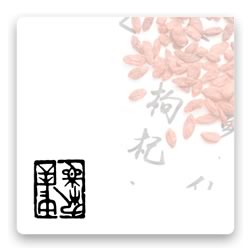We use cookies to make your experience better. To comply with the new e-Privacy directive, we need to ask for your consent to set the cookies. Learn more.
Traditional Chinese Medicine comprehensive therapy for the improvement of motor function in spinal cord injury patients
$8.00
VAT Exempt
In stock
SKU
JTCM-1377
Fifty-one spinal cord injury patients with paraplegia were randomly assigned to an experimental group, who received TCM comprehensive therapy, and a control group, who received orthodox treatment, for four weeks. Patients in both groups received all necessary orthodox medical treatments and the control group also received modern orthodox rehabilitation care, including physiotherapy and occupational therapy. The TCM group received acupuncture, moxibustion, tuina massage, Chinese herbal medicine and TCM health education. The acupuncture point selection included Huatojiaji
(M-BW-35) points at the neurological level of injury. To treat extensor spasms in the lower limb Yinmen BL-37, Weiyang
BL-39, Weizhong BL-40, Heyang BL-55 and Chengjin BL-56 were selected; to treat flexor spasms in the lower limb Futu
ST-32, Yinshi ST-33, Liangqiu ST-34, Zusanli ST-36 and Fenglong ST-40 were selected; foot-drop was treated with Jiexi ST-41, Chongyang ST-42, Xiangu ST-43 and Qiuxu GB-40. If muscle spasm was not present, acupoints were selected on the paralysed muscles themselves. After deqi was achieved electro-stimulation was used for 20 minutes, once a day. If patients had lower limb spasticity, direct moxibustion treatment was given at two to three points along the muscle in spasm. Chinese herbal medicine treatment in the early stage (within 10 days after injury) focused on removing qi and blood stasis, obstruction in the channels and localised swelling. The main ingredients of the formulas were Dan Shen (Salviae miltiorrhizae Radix) 10g, Tao Ren (Persicae Semen) 15g, Dang Gui (Angelicae sinensis Radix) 15g, Hong Hua (Carthami Flos) 5g and Mu Tong (Caulis Mutong) 10g. In the developing stage (10–20 days after injury), treatment focused on treating patterns of stasis and deficiency and the clinical manifestations of swelling, on pain relief, defecation difficulty and urine retention. The main herbs used were Gou Qi Zi (Lycii Fructus) 30g, Gu Sui Bu (Rhizoma Gusuibu) 15 g, Niu Xi (Achyranthis bidentatae Radix) 15g, Tu Si Zi (Cuscutae Semen) 15g, Dang Gui (Angelicae sinensis Radix) 15g and Fu Ling (Poria) 15g. In the late stage (20 days to two months after injury), treatment focused on the pattern of yang deficiency of the Spleen and Kidney. The main ingredients were Bai Jie Zi (Semen Sinapis Albae) 10g, Shu Di Huang (Rehmanniae Radix preparata) 30g, Du Zhong (Eucommiae Cortex) 15g, Niu Xi (Achyranthis bidentatae Radix) 10g, Dang Shen (Codonopsis Radix) 15g and Shen Jin Cao (Lycopodii Japonici Herba) 15g. The results showed that the TCM comprehensive therapy group improved significantly, but there were no significant differences between the two groups. The authors conclude that early TCM comprehensive therapy is an effective method for improving motor function in patients with spinal cord injury. [Oct 16]
(M-BW-35) points at the neurological level of injury. To treat extensor spasms in the lower limb Yinmen BL-37, Weiyang
BL-39, Weizhong BL-40, Heyang BL-55 and Chengjin BL-56 were selected; to treat flexor spasms in the lower limb Futu
ST-32, Yinshi ST-33, Liangqiu ST-34, Zusanli ST-36 and Fenglong ST-40 were selected; foot-drop was treated with Jiexi ST-41, Chongyang ST-42, Xiangu ST-43 and Qiuxu GB-40. If muscle spasm was not present, acupoints were selected on the paralysed muscles themselves. After deqi was achieved electro-stimulation was used for 20 minutes, once a day. If patients had lower limb spasticity, direct moxibustion treatment was given at two to three points along the muscle in spasm. Chinese herbal medicine treatment in the early stage (within 10 days after injury) focused on removing qi and blood stasis, obstruction in the channels and localised swelling. The main ingredients of the formulas were Dan Shen (Salviae miltiorrhizae Radix) 10g, Tao Ren (Persicae Semen) 15g, Dang Gui (Angelicae sinensis Radix) 15g, Hong Hua (Carthami Flos) 5g and Mu Tong (Caulis Mutong) 10g. In the developing stage (10–20 days after injury), treatment focused on treating patterns of stasis and deficiency and the clinical manifestations of swelling, on pain relief, defecation difficulty and urine retention. The main herbs used were Gou Qi Zi (Lycii Fructus) 30g, Gu Sui Bu (Rhizoma Gusuibu) 15 g, Niu Xi (Achyranthis bidentatae Radix) 15g, Tu Si Zi (Cuscutae Semen) 15g, Dang Gui (Angelicae sinensis Radix) 15g and Fu Ling (Poria) 15g. In the late stage (20 days to two months after injury), treatment focused on the pattern of yang deficiency of the Spleen and Kidney. The main ingredients were Bai Jie Zi (Semen Sinapis Albae) 10g, Shu Di Huang (Rehmanniae Radix preparata) 30g, Du Zhong (Eucommiae Cortex) 15g, Niu Xi (Achyranthis bidentatae Radix) 10g, Dang Shen (Codonopsis Radix) 15g and Shen Jin Cao (Lycopodii Japonici Herba) 15g. The results showed that the TCM comprehensive therapy group improved significantly, but there were no significant differences between the two groups. The authors conclude that early TCM comprehensive therapy is an effective method for improving motor function in patients with spinal cord injury. [Oct 16]
| Author | Wang Yuanhui et al |
|---|
Write Your Own Review
* Orders shipped outside of Europe are eligible for VAT relief and will not be charged VAT.

